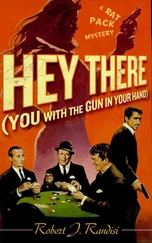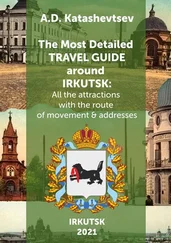We had to learn in six months what we would have studied for two years in the pre-war military academy. The front needed officers for platoon-company level, as these were being killed the fastest at the front. We studied field manuals and had to learn in practice, as they say in the army Infantry Field Manual of 1936, from the actions of individual soldiers to the responsibilities of a company commander in defence and attack. This manual was abolished in 1942 and replaced by a revised manual which was based on the experience gained in the first year of war. We were also supposed to know the army manual, internal service manual, guard duty manual and drill manual by heart. Besides that we studied technical manuals, we were supposed to know the weapons, assembling and disassembling weapons, employment, failures and repair, principles of its work. We studied the Mosin rifle Model 1892/1930, the Simonov automatic rifle, the Degtyarev light machine-gun (RPD or DP) and the Maxim heavy machine-gun – the difficulty with that was in assembling and disassembling its bolt or rather lock, which was intricate. This machine-gun, just like the Mosin rifle, dated back to the First World War and the Russian Civil War, and was used until the end of the Great Patriotic War. Besides those weapons, we studied mortars: the 37 mm company mortar (later withdrawn from service), the 50 mm and the 82 mm mortars, their technical data and employment, firing conditions and preparation for firing. I should say that the level of training was poor, as the teachers did not understand the subject themselves. In general, during the war our mortar crews were really bad shooters. Of course, artillery units – mortar battalions and even regiments – were very well trained, but the infantry mortars were not that successful. Indeed, they almost killed me once! German mortar teams were very good and well trained, while their artillery was just average.
Along with all the other things we were also trained in the language of command (in comparison with other subjects I achieved outstanding success in this field) and also had political classes. Political classes were confined to lectures given by a teacher; exhausted cadets could hardly take them, and some fell asleep. I can remember it myself – I was always dozing off at those lectures, and nothing remains in my memory from them. But in general most of the time in the academy we spent on military subjects, training was intensive and we became quite exhausted. We never completed the course of preparation of fire data for the 82 mm mortar and we had to learn this in our units at the front. But I stayed in infantry and besides me at least 30 men were not sent to mortar units. We never fired live ammo from those mortars, which was wise given that apparently our platoon leaders and company commander themselves did not really know how to operate them. Except for the company commander they were all graduates of the same Kamyshlov infantry academy and had not had mortar or artillery courses during their studies, as they would have had in artillery academies. They studied the theory of shooting a mortar together with us and could not give us any decent knowledge, while we cadets did not take that mortar course seriously.
Our course was over, and in early May 1942 the cadets received their military ranks, some became Lieutenants and some Junior Lieutenants; to my great dismay, I was among the latter. I was upset, but gradually I calmed down – what was the difference, we all had to go to the front as platoon leaders anyway. 480 officers (4 companies) graduated. The graduation was passed unnoticed, just like another day – it was wartime. The barracks were empty, new cadets had yet to arrive. We said good-bye to everyone – to many of them for good. I was not even 19 years old, and we now had to lead other people, soldiers, who were older than us. The burden of responsibility that the war put on our young shoulders was especially heavy. We, young men, almost boys, had to lead at least 100 mature and experienced men; we were responsible for their lives, for orders; we had to solve moral problems, but we, the young ones, did not bend and did not break. That’s the way it was.
Some commanders – we were no longer cadets – some 25 to 30 men, including me, stayed in the academy. They told us that we were supposed to undergo training as tank-hunter platoon leaders in the anti-tank rifle platoon. No one really knew what this might involve. Afterwards we received an explanation in the form of a manual. It stated that in every rifle battalion, first a platoon and then an antitank rifle company were to be formed to engage the enemy’s tanks. The academy received two anti-tank rifles – the first one a Degtyarev model and the second a Simonov, the semi-automatic one, as well as anti-tank grenades. We rarely fired the rifles, as we had to spare the ammo, and threw dummy grenades instead of live ones. Then, in early July 1942, we were sent to an army unit.
We did not go straight to the front but ended up in the 365th Reserve Rifle Regiment of the 46th Reserve Rifle Brigade at Surok station in the Mariiskaya region. They trained replacements for the units at the front in that regiment. Red Army soldiers did basic military training, mostly shooting and tactics – the usual actions of an individual soldier in squad and platoon. Lieutenant Zhukov, a man from our academy and a Muscovite, and I were sent to a sniper company. A 40-year-old, Junior Lieutenant Chudakov, who was called up from reserve, was the company commander. I became platoon leader; I had 30 men as my subordinates. They were all of different ages and nationalities, and many of them had already lived a long life. At first I was a bit uncomfortable giving orders to older men and I felt frustrated, but later it all seemed normal. The platoon leader’s wage was 600 roubles a month; 50 roubles were deducted as a military tax and we got 550 roubles in cash, but we did not have anything to spend the money on, as there were no shops in the regiment. Outside the regiment there was a rationing system, and market prices were very high: a loaf of bread was 200–250 roubles; half a litre of vodka or moonshine was 250–300 roubles – that was all we could get for our wage.
Besides shooting and studying weapons in the sniper company we taught the men to dig in with a small entrenching tool, camouflage in terrain, advance in short rushes, throw grenades, mostly RGD-33s, and to charge with the bayonet. They sent younger men who were enthusiastic about marksmanship to the sniper company, and they tried to reach my level of skill, but there were very few men in the regiment who could shoot better than me. Although we did not have real combat experience, we taught our subordinates to do the things that we knew and could do after graduation from the military academy. The training period for snipers was extended in comparison with the training period of a private from an infantry company. After two or three months of training, or sometimes even less, men were sent as replacements to the combat units, but the regiment’s officers, or more correctly commanders, were rarely sent to the front. For example, I spent at least one year in the regiment (from June 1942 to April or May 1943). During the summer and autumn of 1942 I was twice sent as an escorting officer for marching companies to the combat units, first to Mozhaisk area, and the second time to Voronezh area. The task of the escorting officer was to deliver the company without losses in personnel (there were cases of escapes). Sometimes the political officer of the company accompanied the company commander. Marching companies were normally brought to the divisional or regimental HQ, where men were distributed among units. Officers also started to leave for the front from the 365th Reserve Regiment; officers that came to the regiment were from hospitals, where they had been recovering after wounds, sometimes serious ones. It was time for me to leave the regiment. I had been stuck in that regiment for a long time, but I obtained experience of leading men and received advanced knowledge of military science, and I also became an excellent shooter. I did not have any good friends left in the regiment – many of them had left already, and I was happy to leave the reserve regiment.
Читать дальше












